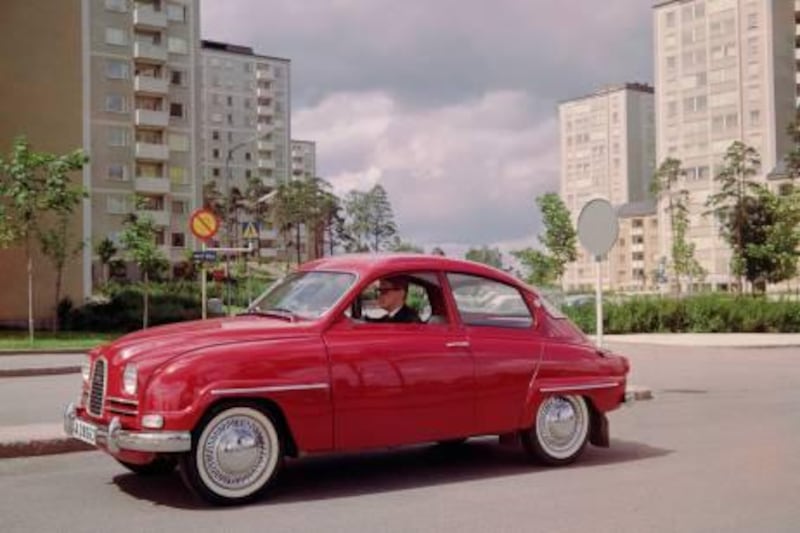To many, a car is merely an efficient, comfortable means of travelling from A to B. But to some it is much, much more and driving becomes a fanatical, rather than a functional, pursuit. These happy few develop an intense emotional bond with their car and an impassioned loyalty to the marque. This phenomenon is so pronounced in Swedish car maker Saab that psychologists have invented a name for it: Snaabery. The hypothesis goes that owners of Saabs see the car's characteristics as extensions of themselves, their loyal steeds possessing virtues that reflect positively on their own ego.
What is it about their cars that engenders such loyalty? The answer perhaps lies in their striking style, that owes much to the company's roots as an aircraft manufacturer. In designing its first model, the 92, back in 1947, it applied the same theories of aerodynamics that informed its plane design. The result, with smooth, sculpted bodywork, was the most aerodynamic production car ever made. This first Saab had a lower drag coefficient than a Ferrari F40. This gave it spirited performance, but perhaps more importantly, set the tone for a unique, quirky style that came to characterise the brand.
This original 92's "teardrop" design evolved gradually during the 1950s, becoming safer and stockier throughout the decade. By 1960, this process resulted in Saab's first mass-produced, exported model, the 96. This featured larger rear windows, greater passenger comfort and more load space. Over the 20 years of its production run, the 96 was to become one of the most loved compact cars in history, combining style, substance, innovation and a sporting pedigree. Originally it was powered by the two-stroke engines of its predecessors but, by the mid-60s, it was offered with a Ford V4 powerplant, getting a top speed of more than 145kph. The 96 was the first Saab to be offered in other markets and proved particularly popular in the UK and the United States.
By the time the last 96 rolled off the production line in 1980, more than half a million had been made, and Saab had grown from a small-scale domestic supplier to a global exporter of international renown. A station wagon variant, the 95, added to the versatility of the range and, in the late 70s, a two-seater sports car, the Sonnet, was also produced. But despite regular facelifts and updates Saab retained the distinctive tear-drop design that had first been devised in its 1940s prototypes.
Saab's reputation for quirkiness, so prized by its drivers, was often the result of safety innovations. Although its Swedish stable-mate Volvo is best known for pioneering important safety advancements, Saab has also made important breakthroughs, including headlamp washers, self-repairing bumpers and blind-spot wing mirrors. In 1969, noting the large number of knee injuries caused by collisions with the ignition during crashes, Saab took the decision to move the ignition next to the hand brake. This has been a defining feature of models ever since and Saab owners derive great amusement from first-time drivers who sit bemused, unable to find the keys.
Quickly earning a reputation for being reliable and robust, Saab's rallying success in the 1960s also leant the marque a performance pedigree. The 96 was a regular winner of European rallies, such as the prestigious Monte Carlo. Its traction and handling, unparalleled in the treacherous tracks of European forests, enabled it to out-muscle much more powerful rivals. Looking at the bulbous Saab, it seems incredible to believe that it took on Mercedes and BMW and, more often than not, came out in pole position. In endurance events, the Saab had no equal in slippery conditions.
With the end of production of the 96, Saab left the compact car market and focused on breaking German dominance of the executive market sector. In 1990, the company was bought by General Motors and subsequent models lacked the quirky, individual style of their predecessors. Mass production and American influence didn't sit well with the Snaabs, who, like wine connoisseurs, turn up their noses at any vintage post-1990.
But in 2010, ownership returned to Europe with Dutch company Spyker, which intends to go back to the marque's roots with a new teardrop-styled 92 due for release next year. Perhaps Snaabery isn't dead, after all.
Wax nostalgic about the yesteryears of motoring at Rearview Mirror.






